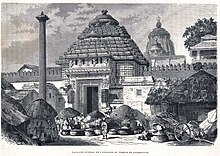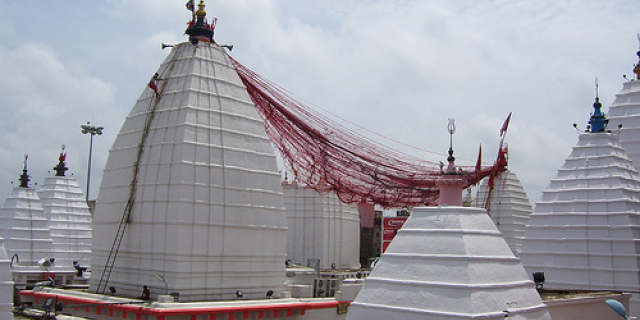जगन्नाथ मन्दिर, पुरी
( Jagannath Temple, Puri )
The Jagannath Temple is an important Hindu temple dedicated to Jagannath, a form of Vishnu–one of the trinity of supreme divinity in Hinduism. It is located in Puri in the state of Odisha, situated on the eastern coast of India. As per temple records, the mythical King Indradyumna of Avanti built the main temple of Jagannath at Puri. The present temple was rebuilt from the tenth century onwards, on the site of the pre-existing temples in the compound, but not the main Jagannath temple, and begun by Anantavarman Chodaganga, the first king of the Eastern Ganga dynasty. Many of the temple rituals are based on Oddiyana Tantras which are the refined versions of Mahayana Tantras as well as Shabari Tantras ...Read more
The Jagannath Temple is an important Hindu temple dedicated to Jagannath, a form of Vishnu–one of the trinity of supreme divinity in Hinduism. It is located in Puri in the state of Odisha, situated on the eastern coast of India. As per temple records, the mythical King Indradyumna of Avanti built the main temple of Jagannath at Puri. The present temple was rebuilt from the tenth century onwards, on the site of the pre-existing temples in the compound, but not the main Jagannath temple, and begun by Anantavarman Chodaganga, the first king of the Eastern Ganga dynasty. Many of the temple rituals are based on Oddiyana Tantras which are the refined versions of Mahayana Tantras as well as Shabari Tantras which are evolved from Tantric Buddhism and tribal beliefs respectively. The local legends link the idols with aborginal tribes and the daitapatis (servitors) claim to be descendants of the aboriginals. The temple is one of the 108 Abhimana Kshethram of the Vaishnavite tradition.
The temple is famous for its annual Ratha Yatra, or chariot festival, in which the three principal deities are pulled on huge and elaborately decorated raths, or temple cars. The worship is performed by the Bhil Sabar tribal priests, as well as priests of other communities in the temple. Unlike the stone and metal icons found in most Hindu temples, the image of Jagannath is made of wood, and is ceremoniously replaced every 12 or 19 years by an exact replica. The temple is one of the Char Dham pilgrimage sites. It is also famous because many legends believe that Krishna's heart was placed here, and the material that it is made from damages the heart, so they have to change it every seven years.
The temple is sacred to all Hindus, and especially in those of the Vaishnava traditions. Many great Vaishnava saints, such as Ramanujacharya, Madhvacharya, Nimbarkacharya, Vallabhacharya and Ramananda were closely associated with the temple. Ramanuja established the Emar Matha in the south-eastern corner of the temple, and Adi Shankaracharya established the Govardhan Math, which is the seat of one of the four Shankaracharyas. It is also of particular significance to the followers of Gaudiya Vaishnavism, whose founder, Chaitanya Mahaprabhu, was attracted to the deity, Jagannath, and lived in Puri for many years.
The temple was rebuilt by the King of the Eastern Ganga dynasty, Anantavarman Chodaganga, in the 10th century CE, as described by the Kendupatna copper-plate inscription of his descendant, Narasimhadeva II.[1] Anantavarman was originally a Shaivite, and became a Vaishnavite sometime after he conquered the Utkala region, in which the temple is located, in 1112 CE. A 1134–1135 CE inscription records his donation to the temple. Therefore, the temple construction must have started sometime after 1112 CE.[2]
 Drawing of Jagannath temple from the book L'Inde des rajahs : voyage dans l'Inde centrale et dans les présidences de Bombay et de Bengale, 1877
Drawing of Jagannath temple from the book L'Inde des rajahs : voyage dans l'Inde centrale et dans les présidences de Bombay et de Bengale, 1877According to a story in the temple chronicles, it was founded by Anangabhimadeva II. Different chronicles variously mention the year of construction as 1196, 1197, 1205, 1216, or 1226.[3] This suggests that the temple's construction was completed or that the temple was renovated during the reign of Anantavarman's son, Anangabhima.[4] The temple complex was further developed during the reigns of the subsequent kings, including those of the Ganga dynasty and the Gajapati dynasty.[5]































Add new comment